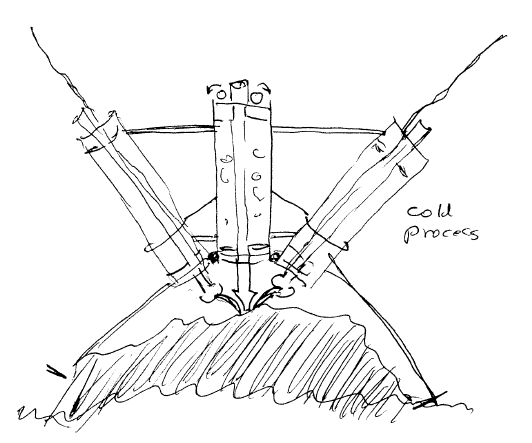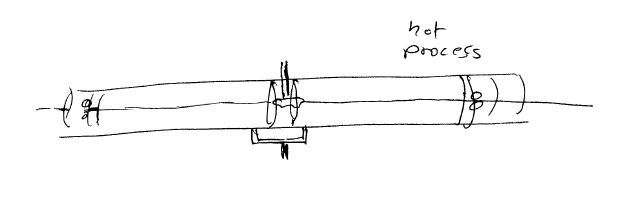
A major initiative in space will be to turn the things we find into things we can use. On earth we take ore and make it into primary shapes. We take bars, sheets, and chunks of metal and cast, cut, grind, hammer, bend, and weld it to produce parts which we then assemble into components which then become machines or structures. Other materials are handled in various other step by step processes to become various goods. Industries have developed over time both as occupations and as corporations. When the processing of material proceeds thru enough steps that no individual or even company is largely responsible we call it high-tech. The American colonists were not high-tech, even the tech they had was absent or denied to colonists. The same kind of thinking that produced so many fatal fiascos in the American colonization are even today producing treaties and patients to prevent and deny unforeseen success by pioneers. Nevertheless to get anywhere in space we have to start by manufacturing things up there � exporting parts and pieces is pointless and prohibitively expensive. We are not going to be successful sending our structures up in pieces and using astronauts to bolt them together. The sequence begins with factories; they are not a later development. If we are going to ship any material into space it had better be the means to process asteroids into construction materials.
One of the materials we are likely to find is nickel-iron, an alloy similar to stainless steel with desirable characteristics for a building material. One form of steal we might directly produce from metallic asteroids is wire. Wire makes good use of the best construction property of steel which is its tensile strength. Wire is often produced by cold drawing, sometimes from a hot extruded bar. Nickle-iron is a crystalline material, the size and orientation of which crystals affect its physical properties. Extruding by forcing the material around and angle aligns the crystals and is a usual preparation for drawing it into wire.
 Cold Process A shaped chisel driven into native nickel-iron may produce burrs with aligned crystals which can
then be drawn into wire. Converting native material directly into usable form is very desirable.
Wire can be further processed to produce cable or woven and welded to produce metal fabric.
Melted material can be extruded, and then drawn into wire even if the cold process is unworkable.
Bars may also be produced which in conjunction with wires can be built into many structural forms.
Aluminum is even more amenable than steel for making wire. Both these processes meet the goal of
self contained manufacturing, as opposed to large scale operation requiring fixed equipment � they
can be brought to the material rather than bringing material to some kind of processing plant.
Only usable pre-processed material needs to be transported.
Cold Process A shaped chisel driven into native nickel-iron may produce burrs with aligned crystals which can
then be drawn into wire. Converting native material directly into usable form is very desirable.
Wire can be further processed to produce cable or woven and welded to produce metal fabric.
Melted material can be extruded, and then drawn into wire even if the cold process is unworkable.
Bars may also be produced which in conjunction with wires can be built into many structural forms.
Aluminum is even more amenable than steel for making wire. Both these processes meet the goal of
self contained manufacturing, as opposed to large scale operation requiring fixed equipment � they
can be brought to the material rather than bringing material to some kind of processing plant.
Only usable pre-processed material needs to be transported.
 Hot Process After metals we should make ceramics and glass fibers. Our habitats will be made of a combination
of metals and ceramics. Glass fiber is made on earth by dropping � a function of gravity, so we
will have to experiment to find a way to make it in space. I hope the hot process pictured above
will work for glass but I have no way of finding out.
Hot Process After metals we should make ceramics and glass fibers. Our habitats will be made of a combination
of metals and ceramics. Glass fiber is made on earth by dropping � a function of gravity, so we
will have to experiment to find a way to make it in space. I hope the hot process pictured above
will work for glass but I have no way of finding out.
Volatiles are harder to come by in near space, some may be found in small pieces that we cannot presently detect or may be in mineral form in some asteroids. Catching a comet will be a heroic task but I think from the beginning we should have it as a goal. In the beginning we will be constructing solar collectors and harvesting electrical power, some of that power we will convert to microwaves. We may be able to beam microwaves a long way in space and if we use them to power ion engines we may become able to steer comets, �cooking� the comet volatiles to produce thrust.
